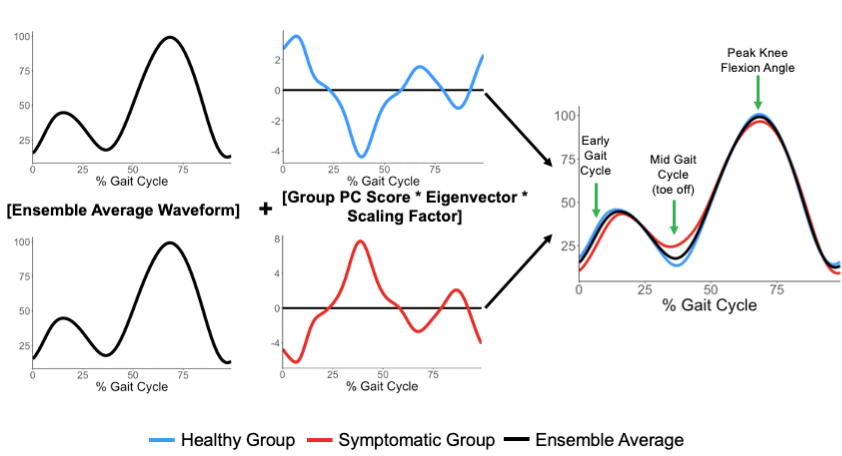A data mining approach for determing biomechanical adaptations in runners who experienced and recovered from patellofemoral pain syndrome
Publication is currently under review

This project has been presented at the following conferences & talks:
- UMass Kinesiology Department Seminar. Seminar Talk. Amherst, MA. November 28, 2022.
- 2022 North American Congress of Biomechanics. International Conference. Ottawa, Canada. August 21-25, 2022.
- 2022 World Congress of Biomechanics. International Conference. Taipei, Taiwan. July 10-14, 2022.
- UMass School of Public Health and Health Sciences Research Day. Poster Presentation. Amherst, MA. April 6, 2022.
Summary of Project and Results
Patellofemoral pain (PFP) is a common musculoskeletal pain disorder often experienced by young, athletic individuals, especially those who participate in running related activities. Multiple studies have investigated biomechanical adaptations in those with PFP, but these studies have typically analyzed discrete timepoints of the gait cycle such as peak joint angles or moments. These approaches may miss important biomechanical adaptations, however machine learning (ML) approaches such as principal component analysis (PCA) and classification models can account for potential adaptations that are missed using traditional discrete variable analysis methods. Kinematics, kinetics, and electromyography data were collected at the beginning and end of a treadmill run in three groups of runners: healthy, symptomatic for PFP, and recoverred from PFP. PCA was applied to reduce entire waveforms down to their most pertinent features. An interpretable machine learning classification model was used to mine out the most important features that differentiated healthy runners from those with PFP. Recoerred runners were classified as either healthy or symptomatic. The results showed many important biomechananical adaptations at, distal, and proximal to the knee in all three planes of motion. At the beginning of the run, knee flexion angles, hip adduction moments, and gluteus maximus activation best differentiated healthy and symptomatic runners. After 21 minutes of treadmill running, nine additional features were required to accurately classify these two groups. Recoverred runners who experienced pain throughout the run tended to be classified into the symptomatic groups based on these features.
Publication
Once and if this ends up being published, I will include a link to the location of the manuscript.
Open Source Jupyter Notebooks
Two jupyter notebooks are available on Github. The first notebook has code that walks through the steps to pre-process data and run the principal component analysis. The second has the code for machine learning modeling and other analysis.